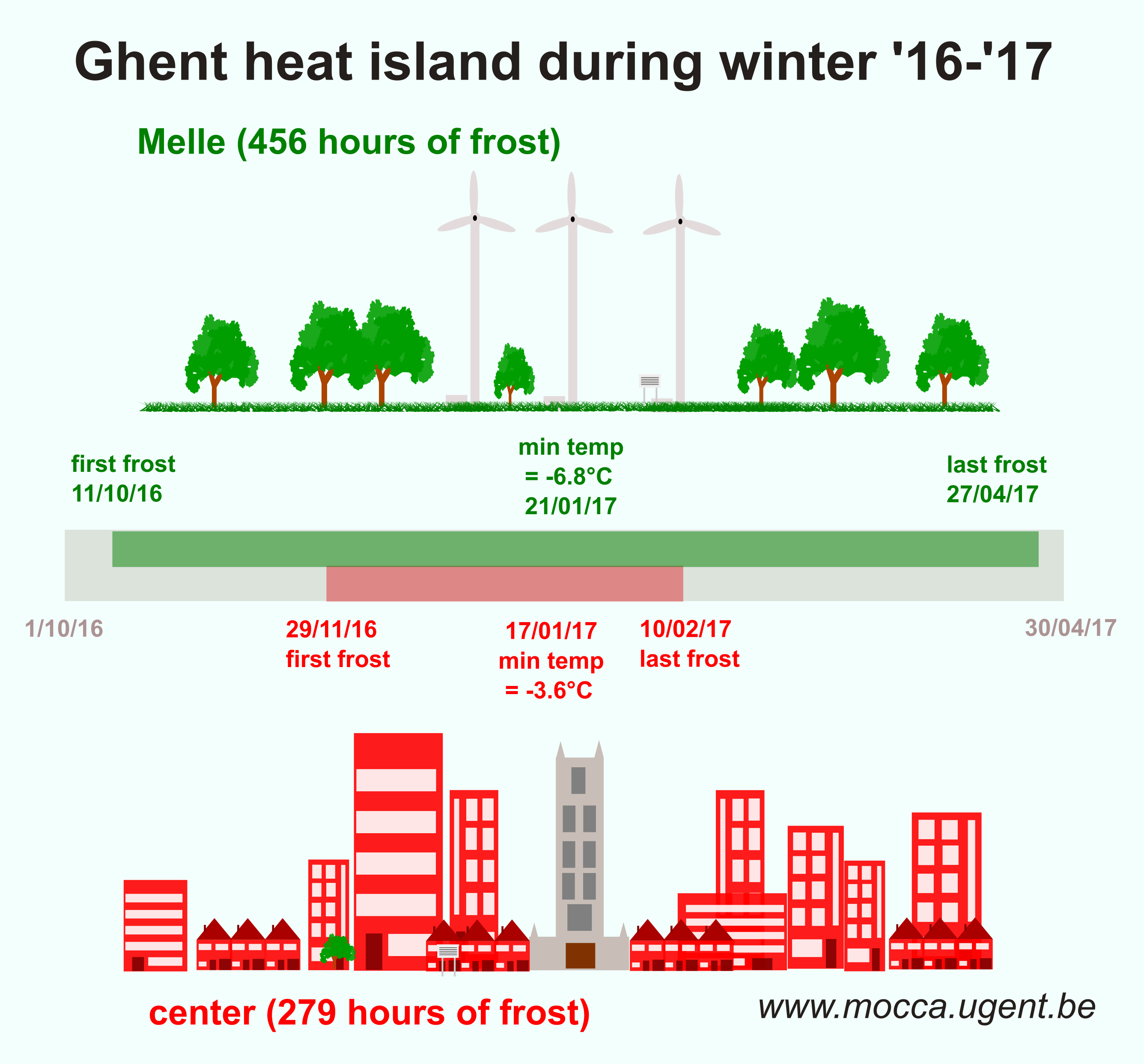Monday 5 february 2018: Frost duration 40% lower in center of Ghent compared with surrounding rural region
Urban heat islands are typically linked to roasting heatwaves in cities. But for the same reasons as in summer (impervious surfaces, geometry of the buildings, human activities,...) large temperature differences between cities and rural surroundings also exist in winter. By using temperature data from the MOCCA network in Ghent we can now quantify this wintertime urban effect.Significant reduction of the 2016-1017 frost season in the city center
At the MOCCA weather station of Melle (rural location just outside the city of Ghent) the past winter period resulted in 456 hours of negative temperatures. But the MOCCA station of St Bavo, situated in the city center, registered a total frost duration of only 279 hours which means a reduction of about 40%. The other urban MOCCA weather stations measured intermediate values, e.g. in the port it has been freezing for 360 hours. Also the frost season, defined as the period from the first till the last frost event, differed significantly. In Melle the temperature went for the first time below 0°C on 11/10/16 and the final freezing temperatures were measured on 27/04/17. In the city center the first and last frost events were respectively on 29/11/16 and 10/02/17. As illustrated in the figure below this means that the frost season was more than halved in the city center with respect to the surrounding rural region.

Impact of milder winter climate in city
Due to the increased heat stress in cities, it is clear that during summer the urban heat island is unwanted. But the wintertime urban mildness might bring some advantages. The elevated winter temperatures reduce the need for heating in cities. There might also be fewer events of slippery road conditions and thus less need to act to prevent slipperiness. Finally, there will be an impact on some animals and plants e.g. some plants not able to survive the Belgian winter climate might survive in the milder city.
Statistics for this winter season (2017-2018) will follow in Spring. Interested? Follow the urban heat island in realtime!
